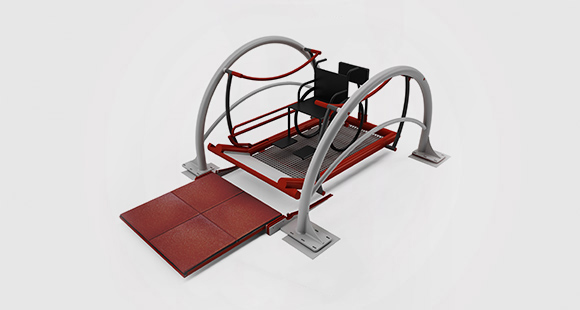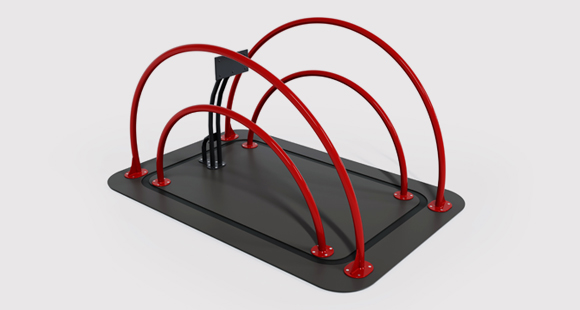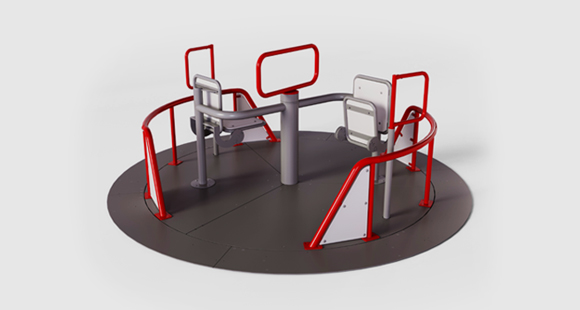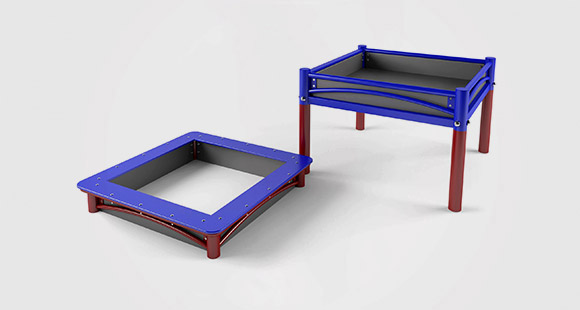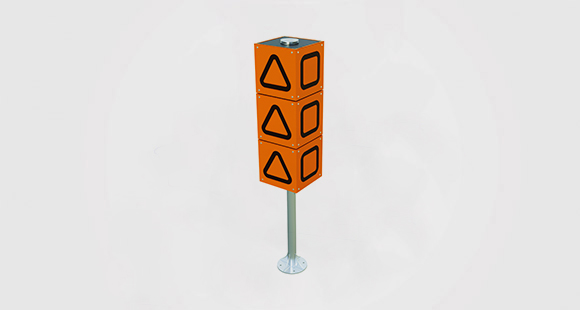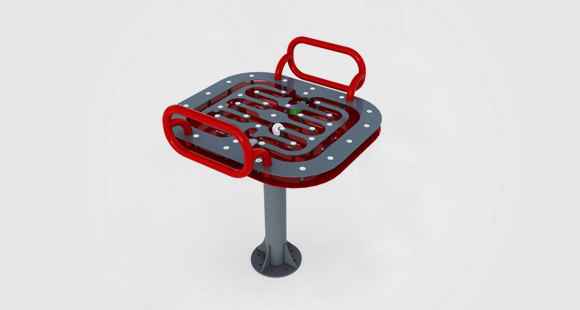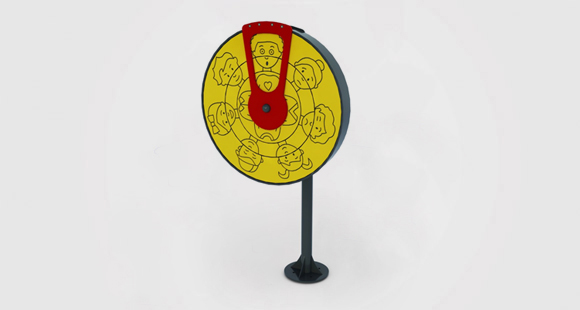Medical devices We design to help
HOW TO CHOOSE AN INCLUSIVE PLAYGROUND EQUIPMENT?
The market offer of devices dedicated to inclusive playgrounds supporting the fun of people with disabilities is gradually expanding. What to pay attention to when designing and selecting proper equipment?
Outdoor play should be available to all children, regardless of their level of fitness. So let's design in such a way as to connect, not divide. This seems clear in theory, but as we go into detail, a number of questions may arise.
For who?
The inclusive playground is intended to be for everyone. But what does this mean in practice? This means that both the devices and the entire arranged space of the playground are designed in accordance with the principles of universal design, i.e. available to users regardless of their level of efficiency.
This efficiency may differ due to the age and health condition of both users (children) and caregivers (parents, grandparents, guardians). The infrastructure and organization of space should therefore favor their diverse needs. However, it may turn out that not all devices are ultimately suitable for everyone. However, it is worth choosing them in such a way that they combine as many possibilities as possible. Real integration occurs when users can use the same device together with equal footing regardless of their level of efficiency.
As for the needs resulting from disability, it is primarily a group of motor disabilities, i.e. people in wheelchairs, walking on mobility supporting devices, with the help of a standing frame, on crutches. The second group that should be paid attention to are the visually impaired or blind, and the deaf and deaf people. Subsequent users are children with intellectual, developmental and sensory disorders (e.g. Down syndrome, autism and related problems).
It is worth remembering that the participants of the game can also be adults - parents or guardians who themselves, affected by disabilities, have a able-bodied child who wants to play with a parent or guardian.
Fitting the space
The arrangement of the playground must be adapted to the existing space. Playgrounds cannot be directly connected with outdoor gyms, street workout zones, parkour zones, skate parks and sports fields. These spaces must be spatially isolated from each other or with the use of fences or landscape elements.
It is very important to remember about the "safety zone", that is, the space that each device has. For static devices, this is usually 1.5 m from all external edges of the device. In the case of devices with forced movement (swings, carousels), this space is relatively larger. Device security zones must not overlap with each other or on traffic routes.
Fig. The diameter of the Inclusive Roundabout with it’s safety area.
Therefore, at the design stage, it is necessary to determine which device has a safety zone, because it can drastically affect the final shape of the project and the possibilities of equipping the playground.
People with mobility impairments, depending on the selected devices, may need additional ramps or a zone where the guardian can leave the stroller (if the child is taken out) and personal belongings.
Safety
The selected playground equipment must comply with the PN-EN 1176 standard. In the case of an outdoor gym, reference should be made to the provisions of EN 16630: 2015. When it comes to playgrounds, especially where there are facilities for wheelchair users, it is not always possible to meet the requirements of the standard (e.g. in the case of swings, where there will always be a risk of shearing between the driveway and the swing platform). Therefore, special attention should be paid to the issue of device certificates in the context of their intended use (especially in the case of public playgrounds, not located at special centers).
As for the possibility of securing the device against unauthorized use (padlock, which in many cases may be a requirement).
Important materials
Materials for the production of devices should be selected (in accordance with PN-EN 1176) and secured in such a way that the structure made of them will not be disturbed before the next appropriate maintenance inspection (as a result of using it as intended and weather conditions). This is especially important in the context of risk in the playground, as damaged materials can create unpredictable risks and cause an accident.
The materials must be safe for users, non-toxic. It is also worth paying attention to the resistance to potential vandalism, because mechanical, intentional damages caused by misuse are excluded from warranty repairs. Therefore, by choosing durable and solid devices, the costs of their maintenance and unscheduled repairs are reduced and, most importantly, a safe place to play for users of various abilities.
Custom colours
When choosing a device for an existing playground or designing a new one, it is worth finding out if the supplier offers the possibility of choosing a color. As a rule, the playground should be colorful and cheerful, but overloading with colors may be tiring or even illegible for users (especially for children with special needs). Some users (autism and derivatives) will need a calm, subdued color scheme, avoiding over-stimulation of the senses.
It is worth paying attention to the possibility of marking sensitive places on devices with a specific color in order to improve the intuitiveness of use, especially for users with disabilities. It is about distinguishing movable elements, important in terms of functionality (starting, stopping).
How much?
Inclusive equipment for the playground may be more expensive than the standard playground equipment only for non-disabled people. Why? Because the process of their creation: design and testing, is much longer than that of standard devices. However, it is not worth looking for the cheapest devices, it is better to invest in a smaller number of them, but with unique functionality that combines the needs of all users of playgrounds, regardless of their efficiency.
It is worth checking the prices with the manufacturer or distributor, before adding the devices to the cost estimate, confirming it with the offer received. The offer includes the price validity period. As prices may be subject to seasonal changes, an appropriate offer validity period should be agreed with the supplier, in line with the actual date of purchase of equipment.
Usually, the price of the device, assembly and transport are given separately. To avoid surprises and additional costs that could result in over budget on implementation, be sure to ask your equipment vendor for all costs.



